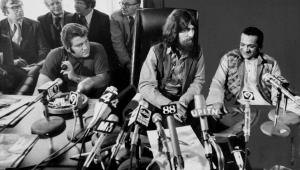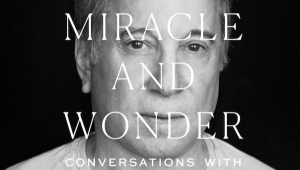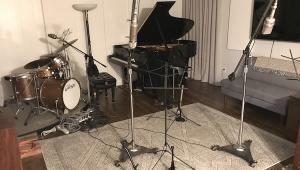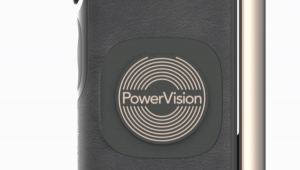As usual, I enjoyed your review. I ordered this box set today . Thanks !
Long-Awaited The Doors Vinyl Box From Rhino Arrives
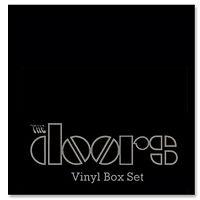
Was it worth the wait? I anxiously broke open my edition (03631 or 12,500) to find out, armed with originals (including the rare mono first album), the Mo-Fi first album, the DCC reissues, now more than a decade old, and some Japanese Warner-Pioneer reissues from the 1980's.
First of all, for the most part, the box set's packaging is truly D-luxe and the labels and inserts accurate to the originals. Only Morrison Hotel misses the mark by not reproducing the original's textured, matte-finished cover material.
The insert containing notes by Elektra founder and president Jac Holzman and Doors engineer Bruce Botnick, provide welcome background and perspective on both LP history in general and production of the originals, as well as a discussion of how these reissues were produced.
By now, almost everyone knows that because of the delicate condition of the now, in some cases, more than forty year old (!) tapes, Holzman and Botnick chose to digitize the reels at 192k/24 bit resolution in order to preserve both their physical and sonic integrity and to allow them to manipulate and deal with sonic problems in preparation for the final cutting without compromise.
What constitutes an original of the first three albums is not as easy as a gold Elektra label. The first two were first mastered, as Botnick points out, by Sydney Feldman at Mastertone Sound in New York City (did he really spell it with a 'y,' which is usually used for the woman's version, or was that a typo?).
I have four gold label copies of Strange Days, but only one has an 'MMatrix' stamp and the date (10-3-67) inscribed on the lead out groove area and it is, by far, the most detailed and dynamic (and brightest) sounding of the four. I assume it's the original cut by Mr. Feldman. It's the one I first enjoyed back in the fabled summer of 1967.
The first two dark and mysterious albums were The Doors' creative peak for me, though in retrospect, Waiting For The Sun, the third album issued summer of 1968 (and originally mastered by Bernie Grundman at Contemporary), though flawed, holds up rather well. Songs like 'The Unknown Soldier,' 'Summer's Almost Gone,' and 'Five to One,' soundtrack selections for many boomers that summer, still pack a punch.
Soft Parade shows a rock band unsure of its direction and wallowing in the distractions of jazz rhythms, busy horn arrangements and stale riffs, then and more so now. The Doors sounding like Chicago? Who needs that, although the string-tinged three minute 'Wishful Sinful' makes some magic and the extended, oddly dichotomized Zappa-esque/Broadway title tune is entertaining in retrospect, but it clearly shows a band following, rather than leading trends.
When the band attempted to find the magic formulas of the first two albums, they found the formulas but not the magic. The mystery and magic of the first two albums, softened on the third, are gone completely on Soft Parade. Even the recording, though competent, lacks the high style and sonic depth of the first two and to a lesser degree the third. Leave it to the public to elevate the lame 'Touch Me' to near the top of the charts. At the end of the tune Morrison spits out the Ajax (the foaming cleanser) advertising slogan 'Stronger Than Dirt,' both because the song's end riff mirrors the slogan, and, it's often said, as Morrison's editorial comment on his band mates' attempts to commercialize 'Light My Fire' by allowing its use in a television car commercial. Morrison vetoed the idea.
1970's Morrison Hotel nudged the Doors toward their bluesy roots (despite the psychedelic trappings, the blues was at the band's core) and returned credibility to the band after The Soft Parade— though the band never had any with a certain segment of the rock audience and among certain critics who thought Morrison and the boys were hokey pretenders.
With so much to prove and so much hanging on its success, Morrison Hotel has a bit too much nervous energy for its own good. In retrospect, it's a good album but not a great one and it doesn't contain any truly 'classic' tracks.
The same can't be said for the final Doors album, issued just two months before Jim Morrison's death in Paris on July 3rd, 1971. How much changed in the world and in The Doors' music between the first and last album! L.A. Woman finds The Doors in richer, more credible blues territory and includes era-defining classics like 'Love Her Madly,' 'L.A. Woman,' and 'Riders on a Storm.'
Morrison had traded his psychedelic mystery voice for a hard-edged bitter blues, asking in 'Been Down So Long,' to be set free. 'Let the poor boy be,' he implores. Though the song is set in a prison, Morrison clearly is asking to be let out of his own prison, the one in which his self-created 'Lizard King' image had bound him. The Doors liked to exit an album with an extended epic and though they might not have known it at the time, going out with the brooding 7:14 long 'Riders on the Storm,' proved a fitting end cap to the group's studio recording history.
Drugs and sex, an Oedipal epic and Kurt Weill made the first album memorable and powerful, while the second album captured and fed back to aware fans the 'Strange Days' that were creeping upon America and the unsettled world just four years after the assassination of JFK, not that Morrison and crew were against an escapist 'Moonlight Drive.' The second album's combination of psychedelia, sex and woozy confusion, aided by the late photographer Joel Brodsky's iconic cover, make it the quintessential Doors album—the one that put the sound, the vibe and the performances together to truly define the group. Unfortunately, there was no recovering from the second album jolt and nothing the group did later can compare. However, with the luxury of time (a lot of it!) the group's rich output has only been enhanced, both artistically and with this box set, sonically as well.
As the albums originally came out, the sound quality seemed to deteriorate along with the artistic integrity. The first two albums were steeped in a dark, rich and definitely unsettling atmosphere. My college roommates (one of whom went on to become the superintendent of a school system!) won't mind, I assume, if I divulge that one of our great pleasures at the end of the school week was to unearth our 'stash' carefully hidden in the garage next to our basement apartment, roll up a number, smoke it as the Ithaca winter darkness settled in late afternoon and then listen to Strange Days on my hi-fi, then consisting of a Dynaco PS-3x, stereo 120, Dual 1009SK/Shure V-15 Type II and a pair of AR-2ax speakers.
Once suitably toasted, it was easy to sink into the bubbling psychedelia of 'Strange Days,' and remain suspended, each in our own little purply haze, until the end of 'Moonlight Drive.' 'Horse Latitudes' may have been silly but it was creepy and evocative and conjured up perfectly grotesque images upon which adventurous minds could feed for that short minute and a half before the liberation of 'Moonlight Drive.' When the side ended it took a genuine effort on all our parts to return to a state of consciousness that could fairly be described as 'aware of our surroundings.' We wouldn't have had it any other way. It was a state of mind no computer speaker/MP3 system could hope to induce, you can bet on that!
Another few hits and we were ready to go back from whence we came with 'People Are Strange' and the rest of the side, ending appropriately with 'When the Music's Over.' For us it wasn't, as we sat there in the dark for a few more hours of listening before the munchies got us.
Listening straight through this box set now, in 2008, it's fascinating to find that the music is still compelling, that after a thousand or so plays Strange Days is still the best and most unnerving Doors album, and that the records that followed were not nearly as good. However, time has treated them kindly, and even the worst of the lot, The Soft Parade holds interest, if only because the perspective of time adds an unexpected contextual richness.
The sonic picture slides in reverse, however: while the records seemed to slide downhill sonically over time, in fact, it turns out that it was the mastering and/or production that did them in. You have to remember that rock LPs in the mid 1960's had yet to become a mass consumption commodity. That happened quickly between 1967 and 1971 and as the numbers rose, the quality of the product declined as it had to accommodate mass consumption playback gear. Remember: the '60s took RCA from the heights 'Living Stereo' to 'Dynagroove' to the sonic and physical depths of 'Dynaflex'!
Whatever the reasons, whether a purposeful effort to degrade or the belief that progress was being made, the sound of the Doors albums seemed to slide down hill over time. Comparing the originals of the first two albums to the reissues demonstrates both how good the originals sounded and how close Holzman, Botnick and Grundman have come in re-creating the original magic, digital or no digital. In fact, it could be argued that these new reissues of the first two albums sound bigger, more dynamic, detailed and tape like compared to the commercial originals. They surely are somewhat brighter but not harder (though demagnetization really smooths them out), and they are more dynamic, bigger and more detailed by far.
My only quibble about the second record is that the elasticity of the toms and the other drums has been hardened somewhat, there is a slight loss of immediacy and transparency compared to the cut from the fresh tape and the bass is somewhat less supple and extended, but only by a small degree and overall the reissue smokes all of the gold label copies I have save for the one with the date etched into the lead-out groove area. The mono first album comparison was as close to a dead heat as it gets. And these new reissues are far superior overall than the Japanese, Mo-Fi or DCC reissues. The DCCs may sound more pleasant but they are also more distant, and far less detailed, particularly in terms of sustain and decay. The new reissues sound more like analog tape by a considerable margin.
Interestingly as you listen through the records in chronological order, whatever your opinion of the artistry, you will be surprised to find (especially if you have originals) that the sound actually improves compared to the originals or the previous reissues. This box restores the recordings to whatever original greatness they originally had. A greatness that was lost in the mastering, plating and pressings of the originals, including Bernie Grundman's original cut of Waiting For the Sun. You've improved with age, Bernie!
Overall then, I'd say the wait for The Doors box set has been well worth it. I got my money's worth in one long sitdown with the entire set and I know I'll be listening happily for a long time to come. So thanks to everyone involved in this long, arduous process. The packaging is swell and the pressing quality is uniformly excellent though a few sides exhibited greater eccentricity than I like to see.
The Doors Vinyl Box is sure to become a collector's item, though you can be sure the 192k/24 bit masters will eventually be sold as internet downloads. Somehow, I'm sure the vinyl will still sound better. There's some kind of magic in the grooves and I don't care if it's additive. It's certainly addictive!
- Log in or register to post comments







